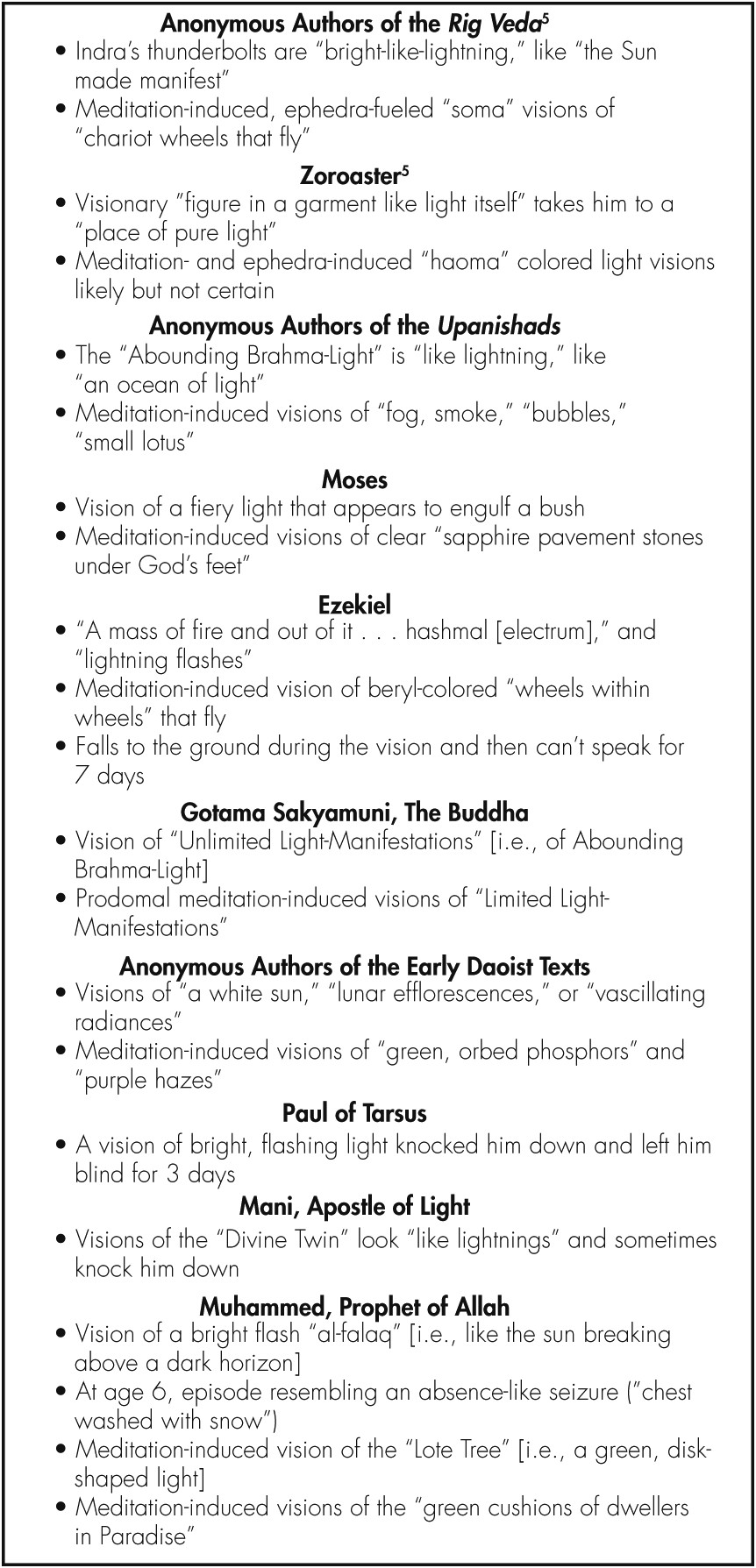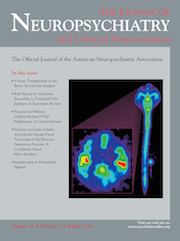To the Editor: In a recent article, “The Role of Psychotic Disorders in Religious History Considered,” Murray, Cunningham, and Price
1 propose the provocative hypothesis that Abraham, Moses, Jesus, and Paul suffered primary or mood disorder-associated psychotic symptoms and that these experiences inspired the beliefs and actions that eventually led to the formation of new religions. Without discounting that hypothesis, I suggest that their analysis would be strengthened, first, by enlarging the sample of religious innovators to include the founders of all of the world’s major religions, and, second, by taking into account, as a primary etiological factor, a specific type of paroxysmal vision described as a “white light,” or, alternatively, as light that appears sun-like, fire-like, or lightning-like.
Figure 1 lists descriptions of white-light visions by founders of the world’s major religions.
In order for the visual field to be inundated with white flashes, paroxysmal discharges must be present at a central location in the visual system, most likely in the hippocampus and its adjacent temporal cortices, which would eclipse other vision-related signals. When hippocampal seizures stimulate the septum, this generates sensations that clearly qualify as “ecstatic.”
2 Other paroxysmal symptoms are sometimes present: muscle tremors, physical collapse, loss of consciousness, and/or temporary residual dysfunction, such as inability to speak (Ezekiel) or temporary blindness (Paul). Some of these seizures erupted spontaneously, consistent with a diagnosis of epilepsy, but, in many cases they were
self-induced by persons for whom there is no other evidence of epileptic vulnerability, persons who adopted a dissociative defense strategy of frequent and prolonged “empty-mind” meditation. If apparently “normal” individuals can learn to self-induce temporolimbic visionary paroxysms at will, and if, as a result, they experience the dramatic changes associated with interictal behavior syndrome, the question of accounting for their charismatic influence on others is no longer as problematical as is the case with the hypothesis of psychosis.
The clues revealing that founders were adept at meditation are references to seeing visions of light-rings or visions of green or blue lights. I have published elsewhere a neurologically-grounded, reverse-engineering analysis of the characteristics of meditation-induced light-visions demonstrating how visions of green light-rings and blue mists are generated by slow-wave sleep rhythms.
3 Activating sleep rhythms when cortical neurons are already hyperexcitable for some reason (e.g., sleep loss or depression) can trigger a shift to corticothalamic hypersynchrony with surprising ease.
4 If meditators continue to focus on the visual field, corticothalamic hypersynchrony can drive emergence of paroxysmal discharges in the hippocampus.
3Although psychosis may on occasion shape the thoughts, emotions, and behaviors of some religious innovators, the critical events that change the lives of world-historical founders of world religions, which inspire them to initiate new religious ideas and practices that instill awe in their audiences, are temporolimbic seizures that have distinctive visual and ecstatic aurae, seizures that can be self-induced by “normal” individuals. Readers interested in viewing video animations of meditation-induced visions and descriptions of visions provided by influential mystics can visit
www.religiousvisionsoflight.com.


